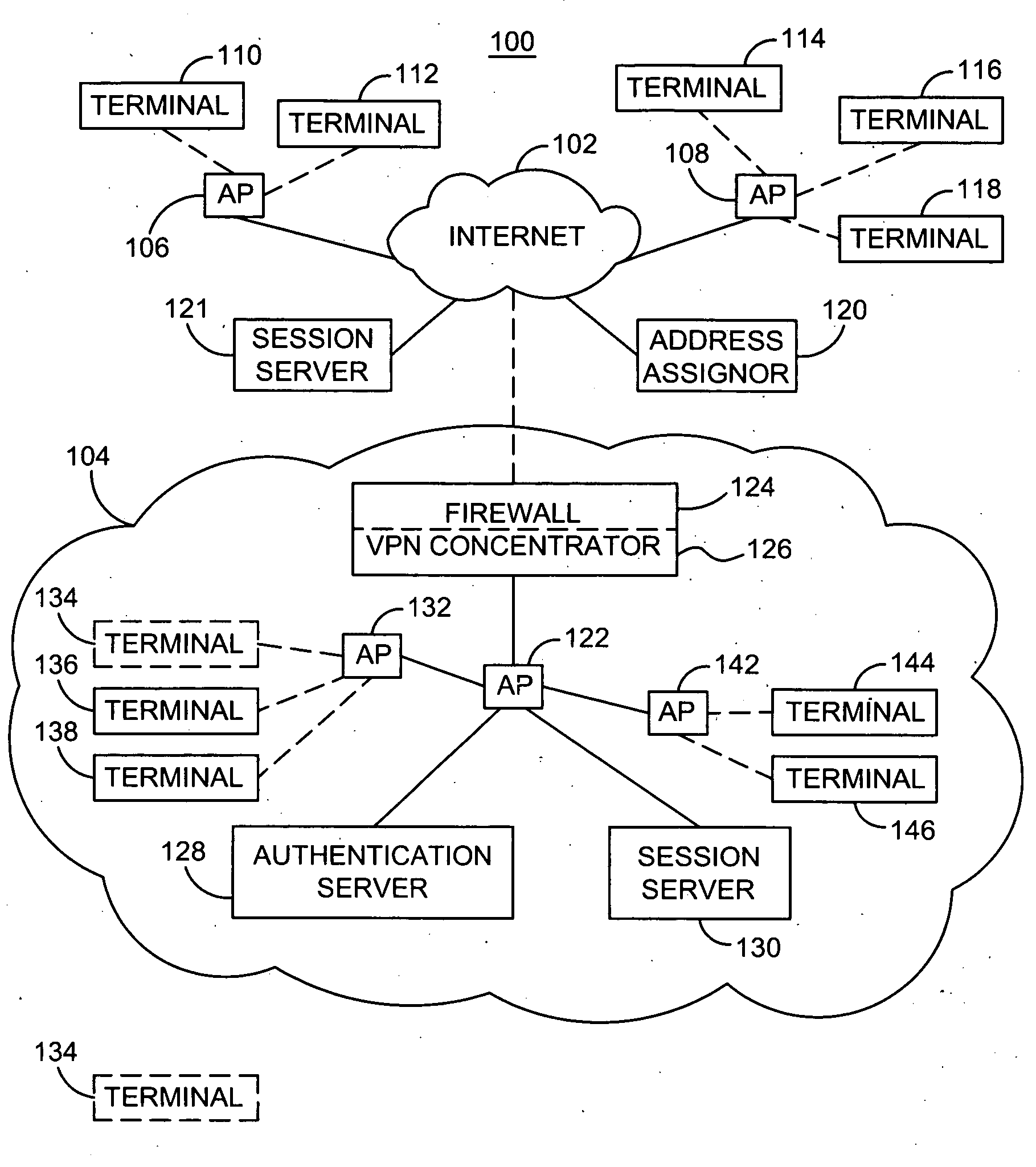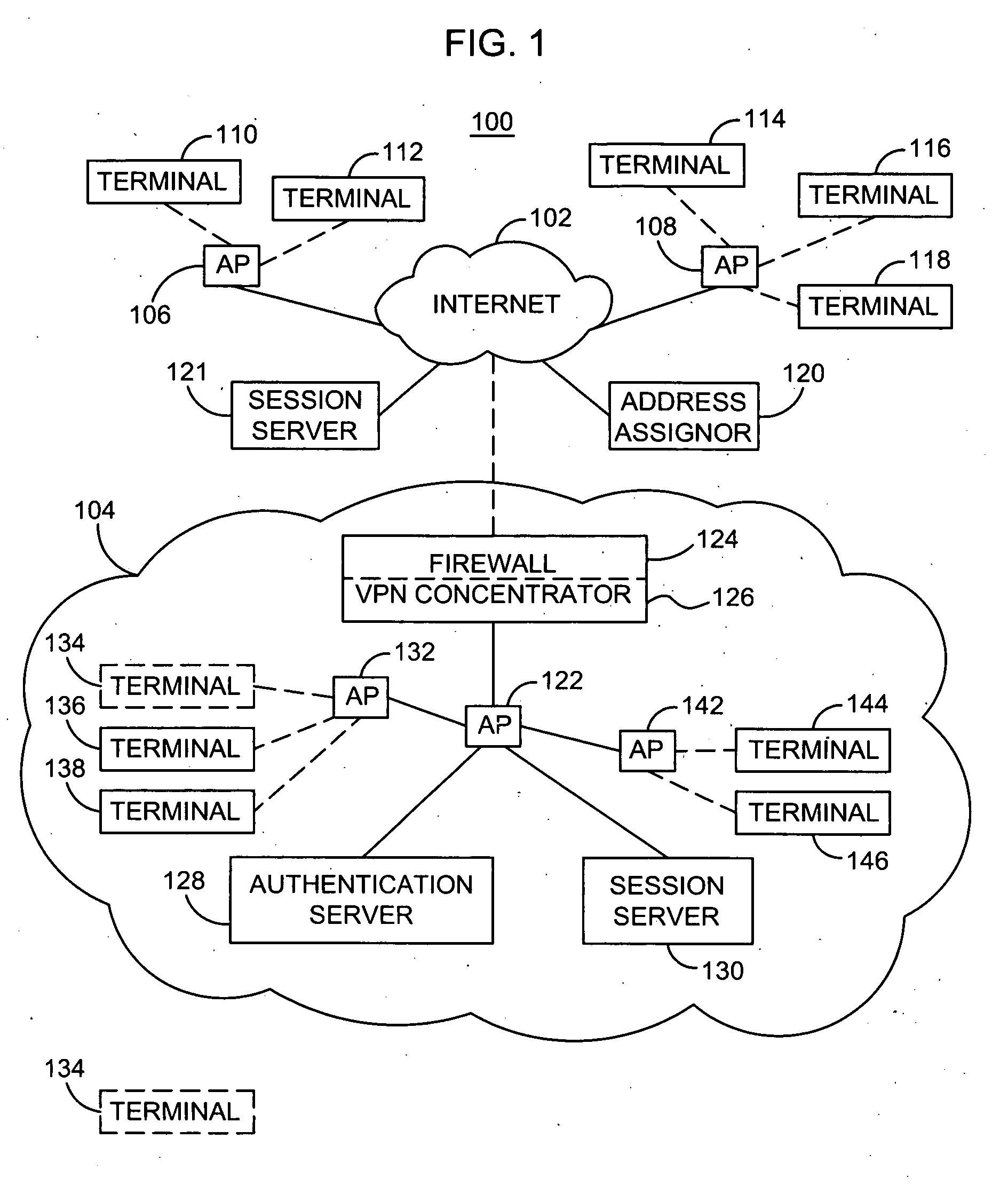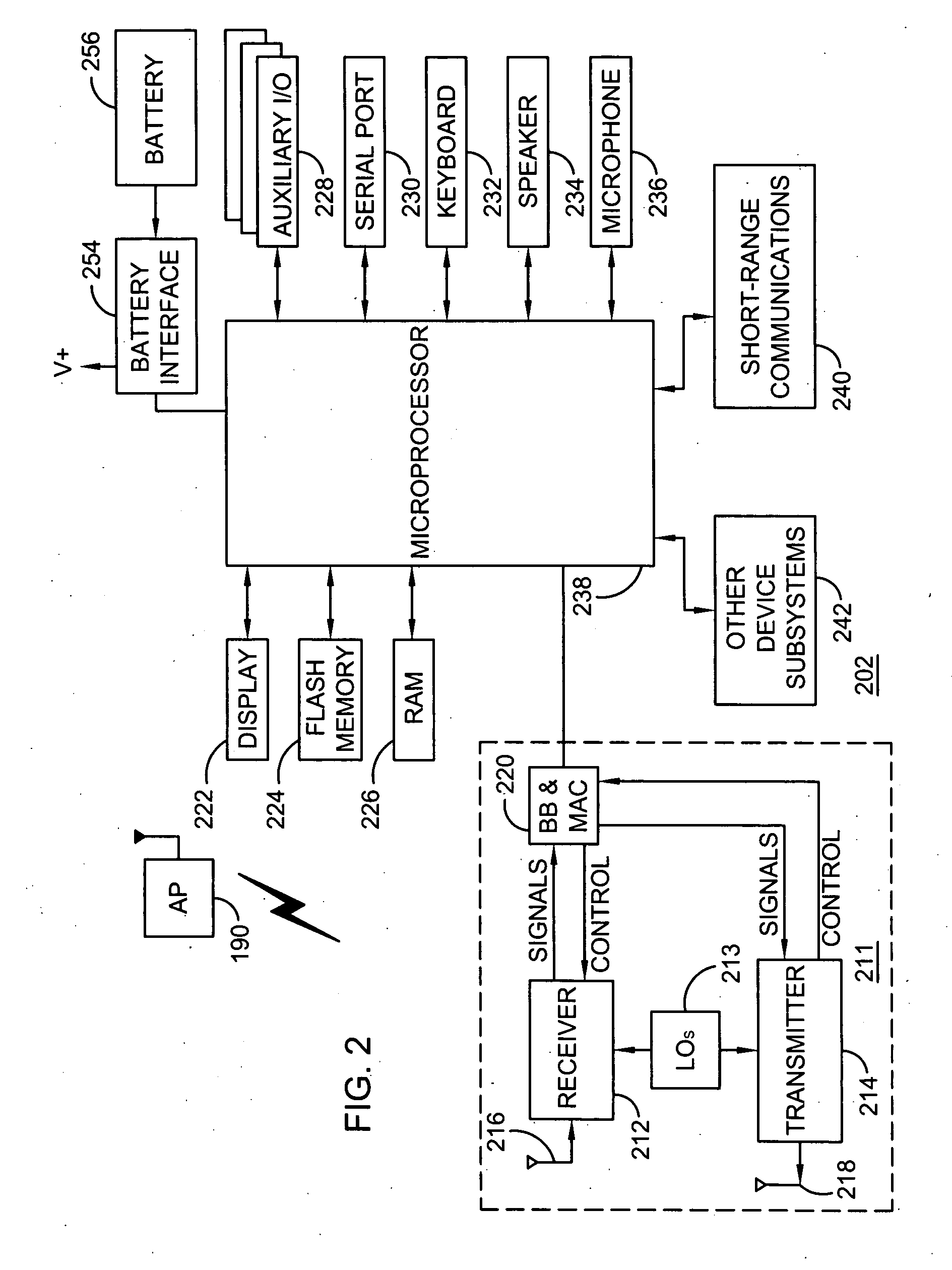Methods and apparatus for reducing power consumption during network scanning operations with adverse battery conditions
a network scanning and battery condition technology, applied in the field of wireless communication devices, can solve problems such as power consumption
- Summary
- Abstract
- Description
- Claims
- Application Information
AI Technical Summary
Benefits of technology
Problems solved by technology
Method used
Image
Examples
Embodiment Construction
[0013] In a mobile communication device, a scanning operation is performed with use of a wireless transceiver to identify one or more available wireless communication networks in a given coverage area. Each time the scanning operation fails to result in any connection between the mobile device and a wireless network, the scanning operation is repeated after delaying for a next delay period of a plurality of scanning delay periods n=[n1, n2, . . . , upper limit]. Initially, an upper limit of the plurality of scanning delay periods n=[n1, n2, . . . , upper limit] is established at a value of M. During operation, however, the mobile device monitors to identify whether a predetermined battery condition, such as a low battery capacity or high battery discharge rate, exists. If the predetermined battery condition exists, the upper limit of the plurality of scanning delay periods n=[n1, n2, . . . , upper limit] is reestablished at a value of N>M. If a more severe battery condition exists, ...
PUM
 Login to View More
Login to View More Abstract
Description
Claims
Application Information
 Login to View More
Login to View More - R&D
- Intellectual Property
- Life Sciences
- Materials
- Tech Scout
- Unparalleled Data Quality
- Higher Quality Content
- 60% Fewer Hallucinations
Browse by: Latest US Patents, China's latest patents, Technical Efficacy Thesaurus, Application Domain, Technology Topic, Popular Technical Reports.
© 2025 PatSnap. All rights reserved.Legal|Privacy policy|Modern Slavery Act Transparency Statement|Sitemap|About US| Contact US: help@patsnap.com



